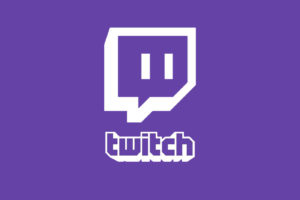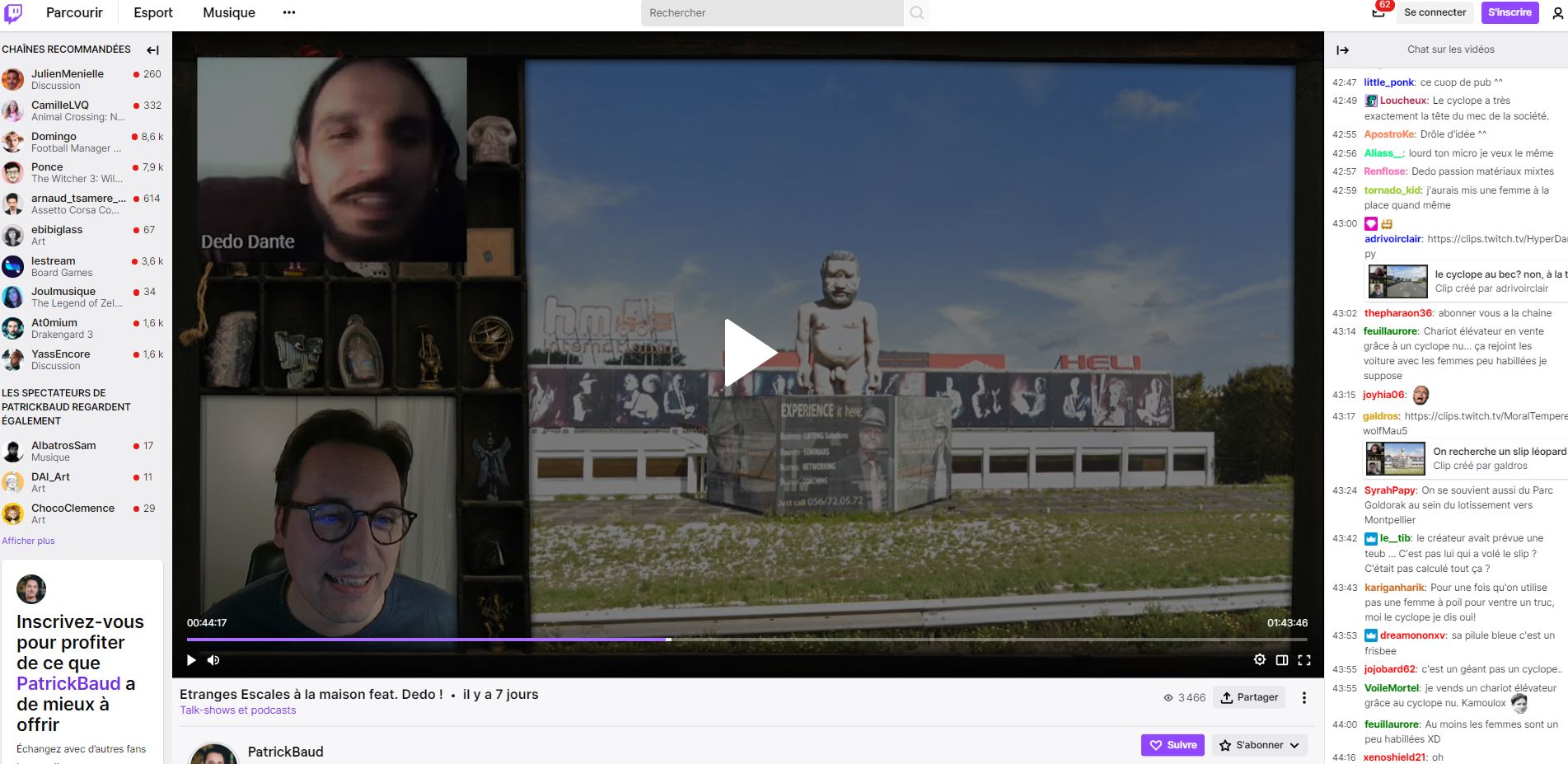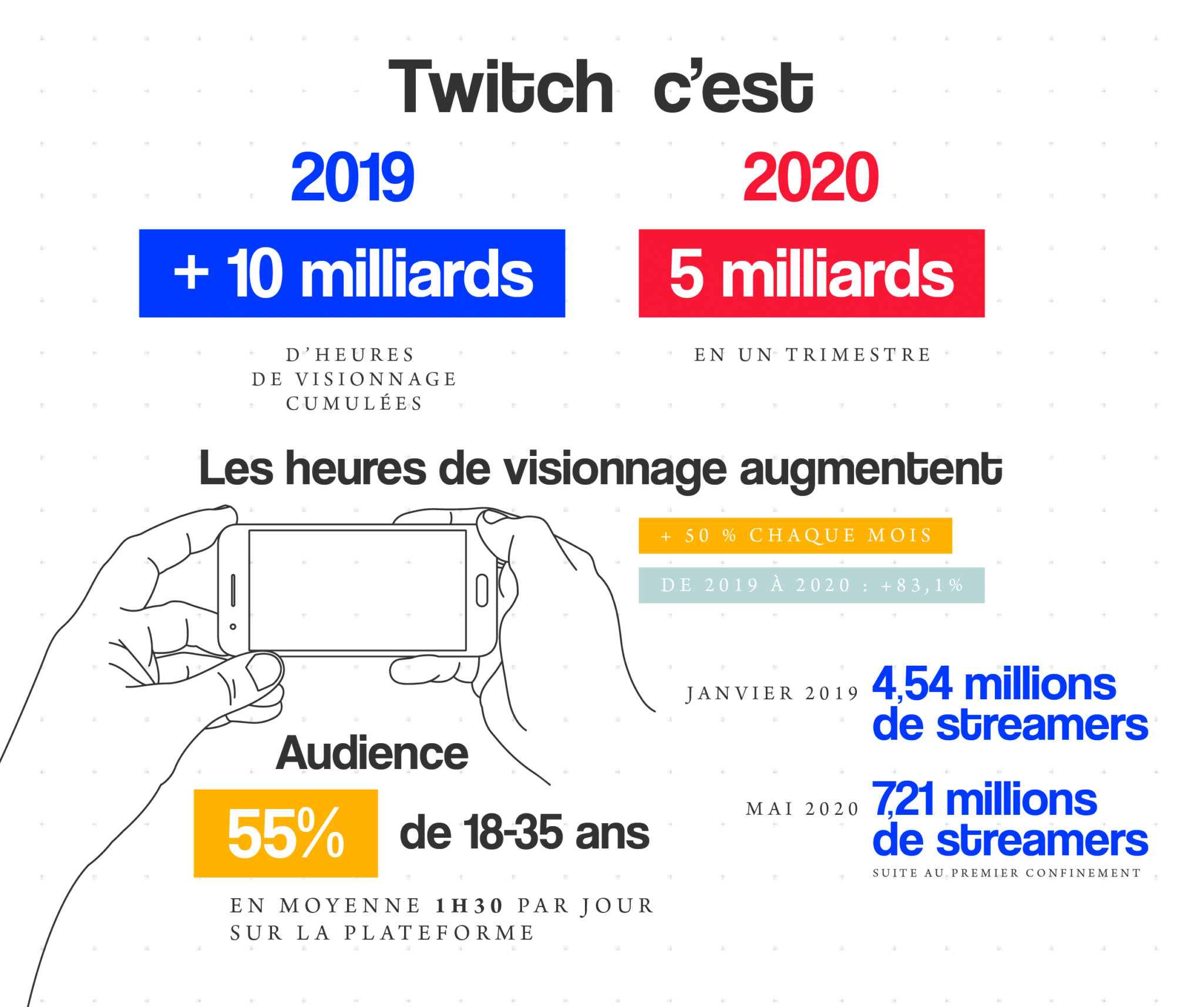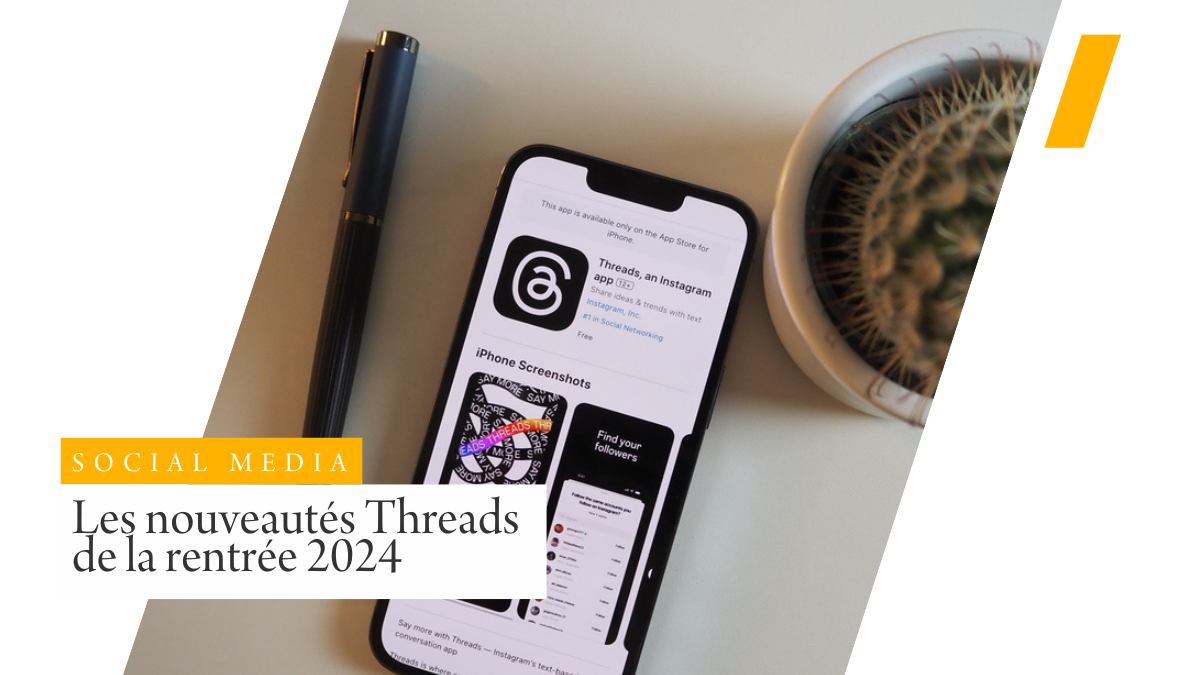Our curiosity has led us to take a keen interest in the Twitch universe of late.
Since the global pandemic and containment(s), as we’ve seen, some digital players have managed to pull their weight: Netflix, Zoom, TikTok but also Twitch.
Indeed, the live format has exploded on all networks, and Twitch has been able to capitalize on this general craze.
Since its creation, its community has continued to grow (15 million daily active users) and its content to diversify.
Even more so in 2020.
It’s fair to say that Twitch, originally dedicated to video games, is now open to the general public.
As we’ll see in this article, this represents a great communication opportunity.
Find out more about this live-streaming platform with a bright future ahead.
What is Twitch?

Put simply, Twitch is the world’s largest live-streaming platform.
Over 65% of the market share belongs to Twitch.
The rest goes to Youtube Gaming and Facebook Gaming…
The story begins in 2006, when 4 young American entrepreneurs: Justin Kan, Emmett Shear, Michael Seibel and Kyle Vogt founded Justin.tv.
A first-of-its-kind website offering live videos of all kinds, with a focus on lifecasting.
In March 2007, Justin began an experiment that lasted around 8 months, living with a webcam and a microphone attached to his cap.
Some lifecasters even film themselves as they travel, from city to city or country to country… A great way to travel from home and follow their adventures!
This new format has proved extremely popular, not least because of its authenticity and audacity.
They quickly saw growth and strong user appeal for Justin.tv’s video game section.
That’s why, in 2011, Justin and Emmett launched Twitch.tv, dedicated solely to video game streaming.
In 2014, they decided to shut down Justin.tv for good, to make way for the development of Twitch.
A few days later, Twitch was acquired by Amazon for $970 million, ahead of Google, which was also very interested in buying the platform.
2 years go by and Twitch attracts more and more Internet users.
Originally reserved exclusively for live gaming and eSport competitions, in 2016 the platform opened up a creative section where users can watch artists create live shows or perform live concerts.
There are also podcasts (one of the best-known French programs is Popcorn, a podcast on current affairs hosted by streamer Domingo), cooking shows, sports, reruns of Questions pour un Champion hosted by Samuel Etienne and Etoiles…
The latter have also developed a daily press review, which has enabled Samuel Etienne to shift his audience from Questions pour un Champion to young people seeking information.
Since 2020 and the democratization of Twitch, we’ve seen new streaming of all kinds multiply.
One example is the arrival of live fashion shows.
The Burberry brand presented its spring/summer 2021 collection on Twitch in September, representing a major innovation for the luxury fashion industry.
We’ve also seen interest from politicians.
It’s a great way to get people talking about them and to raise their profile.
For example, a young American congresswoman played the game “Among Us” live on Twitchons, which was a great success with young people, attracting over 430,000 viewers.
In France, Jean Luc Mélenchon also has his own channel: “Twitchons”.
This diversification of content offered on Twitch has led to further development of the social network.
In November 2020, an article entitled “Twitch, the place to stream” appeared in Elle women’s magazine, further proof that the platform is visibly expanding its audience.
An interesting format

On Twitch, you’ll find two types of user: the streamer and the viewer.
The streamer will broadcast live content, while the viewer will have access to all types of content offered by the various streamers present on the platform.
During a Twitch live stream, the audience has access to a chat window where anyone can react, comment… The streamer can then interact with his community just like on a Facebook or Instagram live stream.
There’s also a familiar “Discover” button, based on the same principle as the “Explore” button on Instagram.
This allows you to discover all the streaming categories.
It’s a format that attracted Patrick Baud, creator of the Axolot YouTube channel, during the lock-in.
He adapted his Étranges Escales content to Twitch, enabling him to offer innovative new content.
Discover below his answers to our questions, to better understand the stakes of his presence on the platform and his opinion on it.

Can you introduce yourself and tell us about Étranges Escales?
My name is Patrick Baud, I’m a writer, videographer and graphic designer.
In 2013, I launched the Axolot youtube channel, on which you can find historical anecdotes, astonishing scientific facts, extraordinary places…
Etranges escales, one of the channel’s flagship series, explores the little-known sights of the world’s major cities, for example.
Why did you become interested in Twitch?
and how would you define the platform?
I got interested in Twitch because I wanted to offer live content, and coming from a radio background, it was something I was missing.
The initial confinement gave me time to learn how to use the platform, and I quickly got the hang of it.
To define Twitch quickly, you could say that it’s the Youtube of live shows, but as Youtube also offers live shows, it’s more subtle than that.
Twitch is, first and foremost, a mostly benevolent community, and an environment conducive to creativity and interaction.
What do you think are Twitch’s advantages over Youtube or Lives Instagram?
And what are the negative points, if any?
Compared to Youtube, Twitch’s strong point is clearly the caring and involved attitude of its community.
Compared to Instagram, it’s the wealth of content we can offer.
Live Instagram allows us to easily address the people who follow us, for example in question-and-answer sessions, whereas Twitch allows us to create real shows.
Did you reach new people on Twitch?
Did your YouTube community follow you in this project?
It’s a mixture of the two, I didn’t start from scratch because some of the people who were already following me came to support me, but there are also some Twitch regulars who came across my channel without knowing me, and who stayed!
Can you give us some key figures for your Twitch channel?
The channel now has 13,000 followers for 45 hours of live broadcasts, and an average of 600 viewers per stream.
It’s not much, but I’m just getting started!
Do you plan to continue streaming content on Twitch in 2021, perhaps with more guests?
Yes, I’m thinking about new formats for 2021, and it’s always better with guests!
The support system for content creators
Some streamers have made a real career out of their work on Twitch, making a living from adverts, Twitch’s Partnership program and donations.
Of course, it’s also possible to be sponsored by brands.
There are 2 systems for supporting content creators: firstly, you can subscribe to a streamer with a monthly donation of your choice.
This subscription will inevitably give you a few advantages, such as a subscriber badge, access to special emoticons, a chat room reserved exclusively for subscribers…
Secondly, you can support content creators by making a donation of any amount during a live stream.
(A great American streamer named Sodapoppin received $10,000 in less than 3 hours solely via donations from his community).
It’s interesting to know that Twitch is owned by Amazon, so if you have an Amazon Prime subscription, every month you’ll be able to subscribe for free to the streamer of your choice without paying a penny on top of your subscription.
Ads on Twitch
As on Youtube, there are Preroll ads and Midroll ads.
In other words, ads that appear before or during content start-up.
Interestingly, the engagement rate for these ads is higher on Twitch than on Youtube.
As we saw earlier, sponsorships are possible.
They can be one-off or long-term.
It’s a great way to creatively develop a brand’s visibility by reaching a targeted audience.
Key figures

Stream Hatchet figures
Thanks to its unique format, Twitch is currently the most engaging platform.
The community interacts, participates, gives… and it’s a way of working that appeals enormously.
And why?
Because a real bond of proximity is created between viewers and streamers.
Something that’s harder to achieve on other networks or social media.
We thought it was important to mention Zevent, an excellent example of the platform’s commitment.
Zevent is a live-streaming charity event organized by streamer Zerator.
Each year, donations go to a different association: In 2018: Médecins sans Frontière, in 2019: Institut Pasteur and in 2020: Amnesty International.
In the last year, players took part in a live-stream lasting over 50 hours, raising 5.7 million euros.

This niche platform is ideal for reaching millenials and young people in general.
It’s also worth noting that the audience is predominantly male, but this is slowly beginning to change.
As you can see, Twitch, which has now surpassed the world of video games, is a special platform with great potential for innovative influencer campaigns.
It enables the creation of instant, authentic content that brings people together.
Twitch’s great advantage is also the ease of interaction and the high level of engagement of its audience.
All this opens up an exciting new space for experiential communication.
However, we must remain vigilant, as Twitch is not suitable for every type of brand.
It’s important to think about a real strategy to reach the right target.
For the moment, nothing has yet been done by brands in the tourism industry, so this represents a great opportunity to take an interest in the platform, particularly for the travel recovery we hope to see this year.
For example, we can imagine a live broadcast on Twitch during a trip with influencers.








